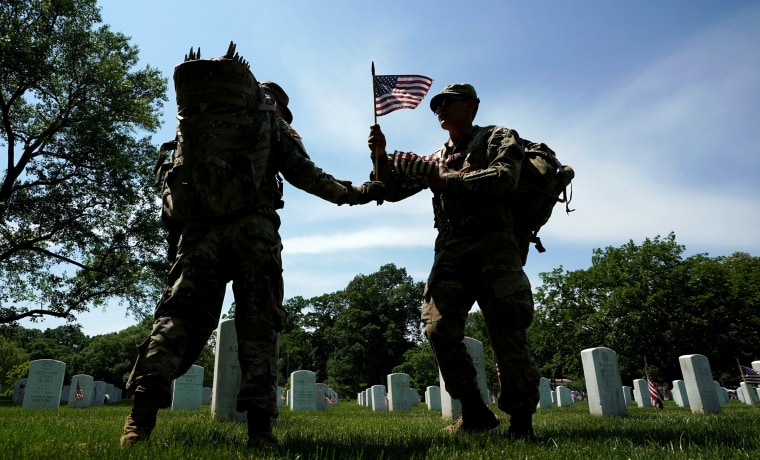On Memorial Day, the best way to honor those who gave their lives in service to our country is by giving the best possible care, compassion and support to those who lived to come home.
A veteran in my community — who I watched move from a struggle with post-traumatic stress disorder and head trauma to being a college graduate and future history teacher — taught me that. Men and women like him teach me — the mother of a Navy veteran and a civilian social worker who serves returning veterans — what it means to be dedicated to a mission, to care for their brother and sister veterans, and to overcome and adapt to the challenges of returning to civilian life after military service.
Returning veterans are leaving a culture in which they are trained for war, and in which every aspect of their daily lives is regulated, to return to a civilian society in which most people have not served and have no idea what the troops have experienced.
Many veterans are able to navigate the transition with minimal support; they find new missions and purpose and make valuable contributions to their communities. However, a significant percentage of veterans struggle with physical and psychological challenges that call for services and support from both the Department of Veterans Affairs and the many dedicated civilian providers working in communities across the nation.
For example, veterans have between four and 10 times the risk for PTSD symptoms than the general population in a given year, and about 10-12 percent suffer with major depression. As many as 22 percent of recent veterans suffer with symptoms of traumatic brain injury and have twice the risk of suicidal ideation. Studies show that many veterans are also at increased risk for suicide, substance use disorders and homelessness. Approximately 20 veterans or active duty service members take their own lives every day.
Clearly, there is much work to be done. But what can civilians do to help?
In my own experience as a community-based mental health provider, I’ve seen that a veteran’s transition process can last for months and even years. There is much that can be done to support them in this process.
First, we must recognize that veterans know how to "adapt and overcome." Given the opportunity, they can take the self-discipline, camaraderie and service they used while on active duty and put them to good use in any area of their lives. They may be struggling with a variety of physical or mental health challenges, but they are far from broken.
Veterans have been trained to stay focused on the mission and not acknowledge pain or the perceived weakness of asking for help. While a necessity in war, this mindset can be a persistent obstacle when transitioning to civilian life. Civilians close to them can remind them that it's not a weakness to ask for help.
Over time, with a combination of support from peers and professional mental health counseling, veterans may become open to the possibility of accessing support services — both community-based and at the VA — to help them with housing, education, substance abuse treatment, vocational training, couple and relationship support, as well as a wide variety of peer support activities.
Next, our government must provide veterans with better and easier access to care. The implementation in June of the 2018 Mission Act, which expands veterans’ ability to access health care in their communities instead of waiting for openings at a VA health services center, is a good start. The VA, in combination with qualified community-based providers, is taking a big step toward making health care and counseling services more easily accessible.
We must also work to expand nonclinical peer support programs, like the Joseph Dwyer Veteran Peer Support Project in Suffolk County, New York, with which I work. Peer mentor relationships can be a soft way to help any reluctant veteran access the multitude of services and programs available to them.
By expanding access to community-based providers trained to work with military personnel, adding more VA satellite locations in rural areas, and developing community-based peer support programs, we can create an accessible, community-based approach that brings needed care to both veterans and their families.
Finally, it is vitally important to train civilian medical and mental health professionals to be effective, culturally competent service providers aware of the distinct challenges that veterans face. As the VA gears up to roll out the Mission Act programs, social workers and other community-based providers must become culturally competent partners in order to extend effective, accessible care to those who’ve given so much.
Social workers such as myself can lead the way in workforce training and delivering high quality care to support veterans’ adjustment processes, as well as honor the service members who never got that opportunity.



